People often ask for camera recommendations, especially for travel. Smartphones are ubiquitous, but for dedicated travel photography, a good small camera offers significant advantages. This guide consolidates the must-have features and recommendations for the best small camera for travel, updated for 2024.
UPDATE: Originally written in 2018 and reviewed in 2024, the Panasonic remains a top pick for a travel camera due to its size and features. The Canon compact option has also seen a valuable update.
A Good Small Camera For Travel needs to be versatile, handling diverse shooting scenarios while remaining easily portable. Travel styles vary, but the core need for a compact and capable camera remains constant. Considering essential travel photography features, what emerges as the best option?
If you’re in a hurry, jump directly to the recommended cameras:
See Our Top Small Camera for Travel Recommendations
Otherwise, continue reading to understand how to choose the right travel camera for your needs.
This post contains affiliate links. As an Amazon Associate, we earn from qualifying purchases. Opinions are our own.
Why Upgrade to a Small Camera from Your Phone?
When friends ask for camera advice and are used to smartphones, the first question is always, “Why switch?”
This question is crucial. If someone is comfortable with a pocketable smartphone, there must be a compelling reason to carry a separate, albeit small, camera. Otherwise, the new camera might end up unused at home.
Smartphone cameras have evolved dramatically. Software advancements drive features rivaling dedicated cameras: excellent HDR, panoramas, GPS tagging, and instant social media sharing.
Smartphones utilize impressive software for outstanding image results.
Here’s an example of a panorama taken with an iPhone. Even with a DSLR available, the iPhone’s panorama function was far more convenient.
 iPhone panorama showcasing software capabilities
iPhone panorama showcasing software capabilities
Exposure: 1/900s ƒ/2.2 @ ISO 100
Focal Length: 4.15mm
Camera: iPhone SE
Date & Time: April 10, 2017, 7:17 pm
The cliché holds true: “The best camera is the one you have with you.” And often, that’s a smartphone.
However, if you’re searching for a good small camera for travel, you’ve likely already decided to upgrade for enhanced photographic capabilities.
Ready for a Camera Upgrade?
The next question is, “What do you plan to photograph?”
For many, it’s family milestones, children’s activities, or special events. However, given this is a travel photography focused website, we’ll concentrate on the best small camera specifically for travel.
 iPhone panorama showcasing software capabilities
iPhone panorama showcasing software capabilities
Exposure: 1/15s ƒ/11 @ ISO 500
Focal Length: 109mm
Camera: Canon EOS 70D
Date & Time: September 29, 2016, 5:54 pm
What Makes a Great Small Camera for Travel?
Certain camera features are universally important, but travel introduces unique considerations. Portability and versatility become paramount. There’s no single “perfect” camera, but there are cameras exceptionally well-suited to most travel photography needs – capturing expansive landscapes and distant details alike.
 Toucan in Tikal, showcasing the need for zoom in travel photography
Toucan in Tikal, showcasing the need for zoom in travel photography
Exposure: 1/100s ƒ/6.3 @ ISO 400
Focal Length: 135mm
Camera: Canon EOS DIGITAL REBEL XTi
Date & Time: September 29, 2015, 11:41 am
The user’s technical comfort level also matters. A camera for a tech-novice parent differs significantly from one recommended to a gadget-savvy friend.
Recommendations here are geared towards advanced amateurs – individuals comfortable with manual settings, shooting in RAW, and post-processing, but adaptable for various users.
Key Features for Choosing a Small Travel Camera
What features are crucial in a travel camera, and what are the trade-offs? Let’s define these features and then evaluate how our top picks measure up. The best small cameras for travel should excel in these areas.
Sensor Size
Sensor size is critical. Generally, larger sensors equate to better image quality. The sensor is the digital equivalent of film.
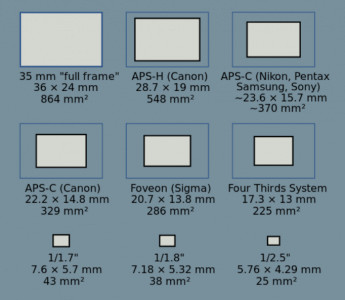 Sensor size comparison illustrating different camera types
Sensor size comparison illustrating different camera types
Tradeoff: Larger sensors mean pricier cameras and larger lenses.
Full-frame sensors are typically found in professional-grade cameras. APS-C sensors are common in consumer DSLRs and larger mirrorless cameras. Micro Four Thirds sensors are smaller than APS-C but still substantial. Point-and-shoot cameras have the smallest sensors. Modern smartphone sensors are even smaller, around 18mm².
Lens Quality and Versatility
After the sensor, the lens is the next most influential factor in image quality. However, lens choice involves trade-offs, especially concerning size and weight—critical for travel.
Lenses are physics in action, bending light onto the sensor. Larger sensors generally require larger lenses. While larger sensors are advantageous, lens size and weight must be considered.
Tradeoff: Lens size and weight are inversely related to zoom range and lens speed (maximum aperture).
Traveling with bulky, professional lenses is often impractical.
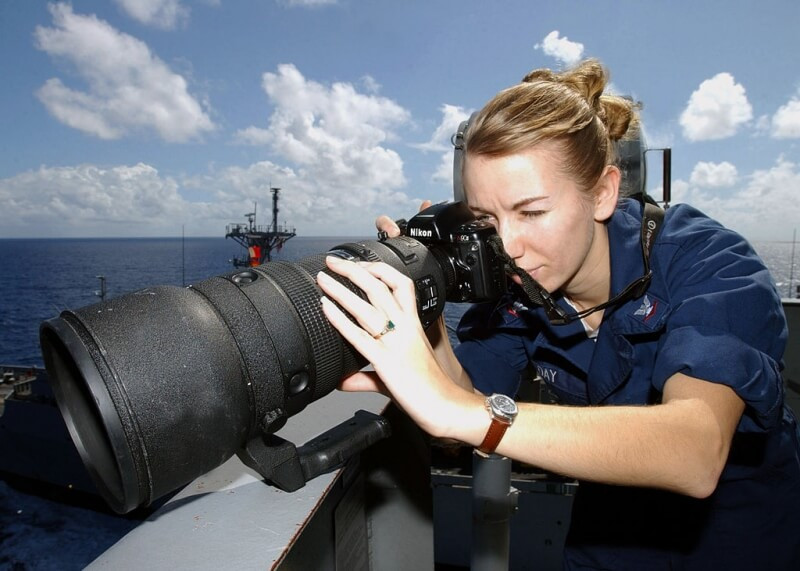 Large telephoto lens illustrating impracticality for typical travel
Large telephoto lens illustrating impracticality for typical travel
Interchangeable Lenses (ILC)
Given lens trade-offs, interchangeable lenses offer significant flexibility. You can choose the optimal lens for each day’s shooting.
Tradeoff: More lenses mean more versatility but increased weight and bulk.
Interchangeable Lens Cameras (ILCs) allow lens selection for specific needs.
Image Stabilization (IS)
Tripods are often inconvenient when traveling. Effective IS is invaluable, enabling shots otherwise impossible handheld, particularly in low light for landscapes and cityscapes.
Tradeoff: Primarily cost; newer, often pricier cameras tend to have superior IS.
Here’s a handheld shot of the Boston skyline, demonstrating the power of image stabilization.
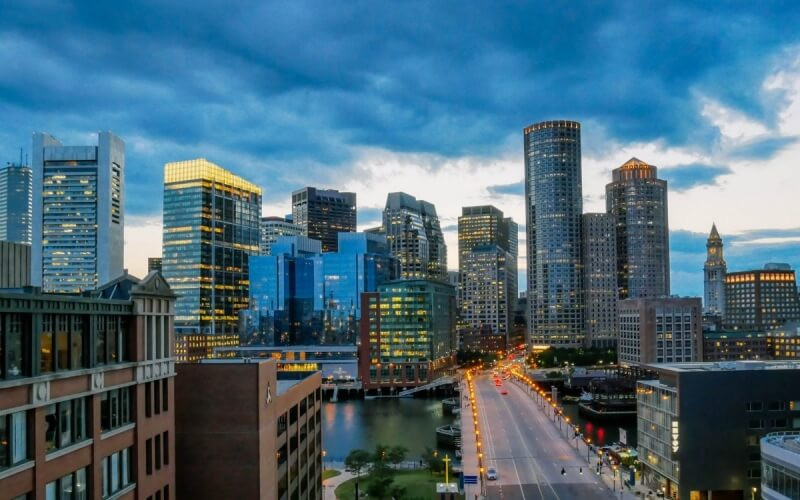 Handheld Boston skyline photo showcasing image stabilization
Handheld Boston skyline photo showcasing image stabilization
Exposure: @ ISO
Focal Length:
Camera:
Date & Time:
Size and Weight – Key for a Small Travel Camera
While less critical in studio settings, size and weight are paramount for travel. A compact, lightweight camera is easier to pack, carry, and use discreetly, enhancing both security and street photography.
Many DSLR owners find their cameras too bulky for regular use, leaving them unused.
Tradeoff: Smaller size often means smaller sensors and fewer features. Viewfinders, tilting screens, and even easily accessible settings may be sacrificed.
Manual Settings
Manual settings offer creative control. Even if initially using auto mode, aperture and shutter priority modes become essential as skills develop. A good small camera for travel should offer these.
Tradeoff: Size. Cameras with manual controls need physical dials, increasing size slightly. Extremely small cameras often bury settings in menus, hindering usability.
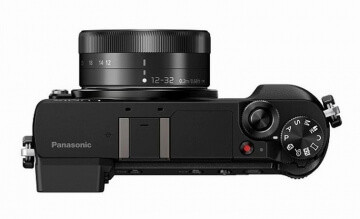 Camera with manual dials highlighting user control
Camera with manual dials highlighting user control
Having full manual settings and familiar DSLR modes is highly desirable.
Wireless Connectivity
On-the-go photo sharing is crucial for travelers. Quick transfer to a phone for uploading via Wi-Fi or Bluetooth is highly convenient.
Tradeoff: Minimal. Newer, pricier cameras often have better connectivity.
Cost
Budget is a major factor for most. Travel cameras face risks of loss, damage, or theft. Mid-range cameras offer a balance of performance and financial risk compared to top-tier models.
Tradeoff: Personal choice. Balancing budget with desired features and travel experiences is key. Overspending might limit travel experiences, while underspending could compromise photographic opportunities.
Bonus Travel Camera Features
These are desirable but not strictly essential features. Depending on individual needs, they might be important priorities.
Video: Most cameras now offer video, some in 1080p, others in 4K. 4K might not be essential for photographers currently, but video stabilization is a significant benefit.
In-camera HDR or Panorama: Smartphones excel at HDR and panoramas. In-camera versions in dedicated cameras streamline workflow, saving post-processing time and maximizing shooting time.
In-camera features simplify processing, maximizing time spent shooting and minimizing computer work.
Weather and Water Resistance: Ideal for adventurous travelers, but often involves trade-offs in other areas. Crucial for surfers or divers.
Portability Enhancements: Simple features like USB charging using standard micro-USB cables greatly enhance convenience, allowing charging from phone power banks or readily available chargers.
Recommended Good Small Cameras for Travel in 2024
Best Overall Small Camera for Travel: Panasonic Lumix GX85/GX80
The top recommendation for a good small camera for travel is the Panasonic Lumix GX85/GX80.
This mirrorless Micro Four Thirds camera with interchangeable lenses balances features and size perfectly for travel. Its rangefinder style and feature set are ideally suited for travel photography.
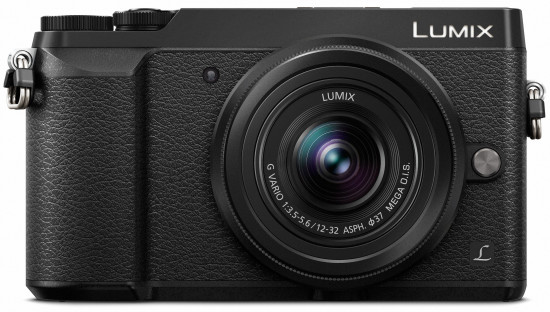 Panasonic Lumix GX85, top pick for small travel camera
Panasonic Lumix GX85, top pick for small travel camera
[Panasonic Lumix GX85 camera body, angled view, highlighting its compact size and rangefinder design, ideal for travel photography.]
Buy the Panasonic Lumix GX85 Now
Let’s examine how the GX85 excels in the previously listed features, explaining why it’s a top small travel camera.
Ideal Sensor Size for Travel
The Panasonic GX-85 uses a Micro Four Thirds sensor. It’s not the largest, but significantly larger than smartphone sensors, striking a balance between image quality and camera size.
It’s approximately 13 times larger than an iPhone sensor and twice the size of high-end point-and-shoot sensors, gathering substantial light for superior image quality.
Why not a larger APS-C mirrorless or entry-level DSLR? While APS-C sensors offer slightly larger size, Micro Four Thirds lenses are considerably smaller and lighter, a major advantage for travel.
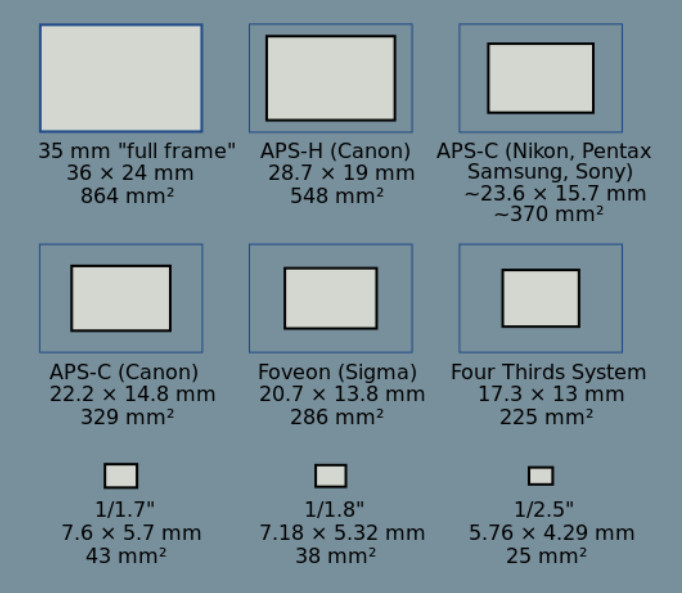 Sensor size comparison highlighting Micro Four Thirds advantage
Sensor size comparison highlighting Micro Four Thirds advantage
The seemingly small sensor size difference leads to significantly smaller and lighter lenses, making the Micro Four Thirds system ideal for travel.
Versatile Lens Options for Every Travel Scenario
For a single, versatile lens, a 24-70mm equivalent focal range is ideal. This covers landscapes, portraits, and some wildlife, adaptable for various travel situations. Many kit lenses and fixed-lens compact cameras cover this range, like the Canon G7x Mark III (24-100mm equivalent).
Explore lens range using Nikon’s lens simulator.
Interchangeable Lenses: Adaptability on the Road
For specialized needs, like wildlife photography on safari, interchangeable lenses are essential. Just as you’d pack multiple shoe types for different travel activities, ILCs offer lens versatility.
For everyday travel, a compact, lightweight lens suffices.
[Panasonic GX85 with a small prime lens, demonstrating its compact form factor for everyday carry and street photography while traveling.]
For low-light or specific photographic walks, prime or zoom lenses can be swapped in.
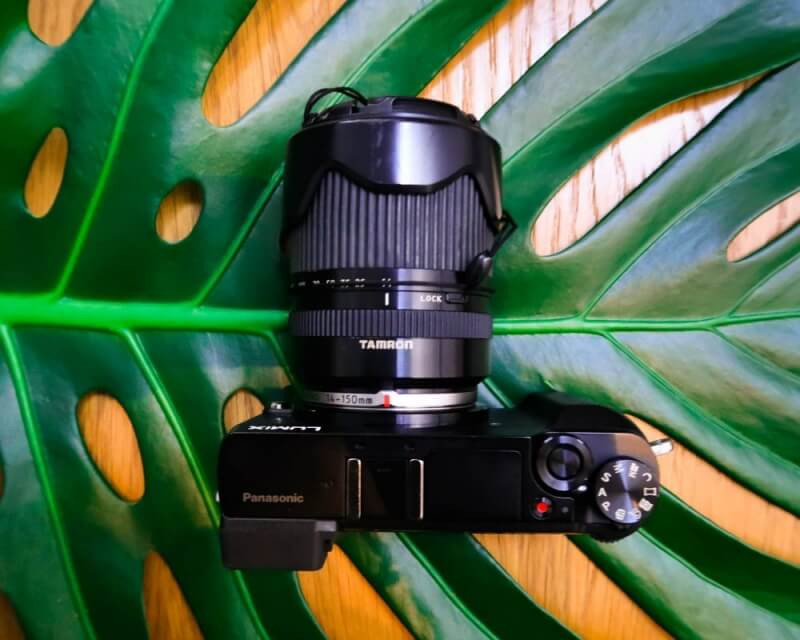 Panasonic GX85 transformed with zoom lens for DSLR-like capabilities
Panasonic GX85 transformed with zoom lens for DSLR-like capabilities
[Panasonic GX85 with a larger zoom lens attached, illustrating its adaptability to become a more capable, DSLR-like setup when needed for specific travel photography scenarios.]
The Micro Four Thirds (M43) system is the smallest interchangeable lens system. While lens and camera body sizes vary, M43 generally offers a smaller overall package than equivalent mirrorless or DSLR systems.
Micro Four Thirds (M43) is the smallest interchangeable lens system, perfect for travel.
The M43 mount standard, shared by Olympus and Panasonic, offers a vast lens selection from both brands and third-party manufacturers like Tamron and Sigma, with over 80 lenses available.
For lens selection guidance, explore resources on the best Micro Four Thirds lenses for travel photography.
READ MORE: A Shortlist of Great Micro Four Thirds Lenses for Travel Photography.
Best Compact Travel Camera Alternative
If interchangeable lenses are not needed, consider a compact option.
The Canon G7x Mark III is a highly recommended compact camera, offering excellent features and value.
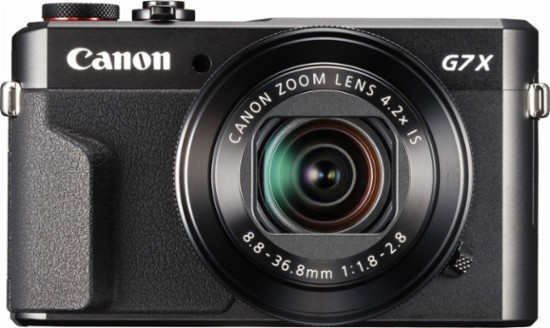 Canon G7x Mark III compact travel camera recommendation
Canon G7x Mark III compact travel camera recommendation
[Canon G7x Mark III compact camera, angled view, highlighting its pocketable size and features as a top choice for travelers preferring a fixed-lens solution.]
Buy the Canon G7x Mark III now
The G7x Mark III features a large 1″ sensor, the largest available in a compact camera.
Bag Recommendation: Consider a DIY Camera Bag for easy, everyday carry.
Its 24-100mm lens is fast, with f/1.8-2.8 aperture, excellent for low-light and shallow depth-of-field photography.
Wired Magazine called the G7x Mark II “likely to be the best pocket camera Canon has ever produced.”
Features include a 180° tilting screen for selfies/vlogging, and in-camera USB charging.
The Canon G7x Mark III is a great, affordable compact travel camera with excellent image quality, albeit with a fixed lens.
Portability: The Essence of a Small Travel Camera
Micro Four Thirds cameras are inherently smaller, ideal for travel. The Panasonic GX85 is particularly compact within the M43 range.
Upon arrival, its size was surprisingly small, capable of replacing both a DSLR and a point-and-shoot.
It includes an electronic viewfinder (useful in bright sunlight, though less convenient with glasses) and an articulating screen (not 180°, but helpful for high/low angle shots), facilitating more creative compositions.
Smaller cameras are also more discreet, advantageous in sensitive locations. Avoid stern “no camera” gestures in markets by using a less conspicuous camera. They also take up less valuable carry-on space.
The GX-85’s USB charging with a standard micro-USB cable is a significant travel advantage. Charge from phone power banks or readily available chargers, eliminating charger loss worries.
Image Stabilization for Travel
Image stabilization is invaluable for travel. The GX85 with stabilized lenses offers impressive 5-axis sensor stabilization, providing approximately 4 stops of stabilization.
This enables handheld shots at slower shutter speeds, including panoramas.
Exposure: @ ISO
Focal Length:
Camera:
Date & Time:
While not precisely measurable, IS significantly expands handheld shooting possibilities compared to cameras without it. Technology has advanced to the point of handheld Milky Way photography.
Full Manual Control for Creative Travel Photography
Access to aperture priority, shutter priority, and manual modes is crucial for creative control. Adapting to varying light conditions becomes seamless with manual settings.
The GX85 provides DSLR-level control with easily accessible dials for quick setting adjustments. User experience is paramount in small cameras to avoid frustration.
This control is a primary reason to choose a dedicated camera over a smartphone. Smartphones, while offering some settings, often lack intuitive control. However, if manual modes and lens changes are not priorities, smartphones might suffice.
On-the-Road Photo Sharing
For those who share photos online during travel, wireless connectivity is essential. The Panasonic GX85‘s Wi-Fi function allows photo transfer (JPEG or RAW, single or multiple) and GPS tagging (via pre-recorded GPS logs).
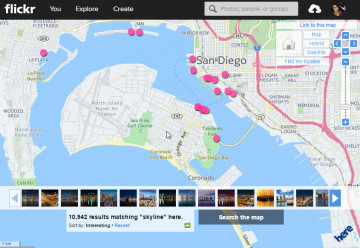 Flickr map of San Diego illustrating GPS photo tagging
Flickr map of San Diego illustrating GPS photo tagging
Seamless GPS tagging like smartphones is still a camera feature wish. GPS consumes battery and struggles with location fixes when moved large distances since shutdown. Manual GPS logging via phone apps remains the current workaround.
Wireless transfer for on-the-go social media posting is a valuable feature.
Areas for Improvement
The GX-85 isn’t without minor drawbacks. Its feature-richness can lead to menu complexity, where enabling one feature disables another (e.g., HDR incompatible with burst mode or RAW-only). While logically sound, it can be confusing in the field.
The touchscreen is overly sensitive, easily activated unintentionally. Disabling most touchscreen functions is often necessary as even a nose touching the LCD can shift focus points. Touch interface design could be improved for intentional use only.
Battery life is moderate, often requiring spare batteries. Carrying extra batteries is highly recommended.
Affordability: Best Budget Small Camera for Travel
The GX85 is surprisingly affordable for its class. For around $700, kits often include the body and two lenses (12-32mm pancake and 45-150mm zoom).
While deals may vary, its price point is exceptionally competitive. Check current Amazon prices here.
Wired Magazine called this camera simply, “The Best Camera For The Money.”
Feature-based camera searches previously highlighted the GX85 and the older, larger Olympus OM-D E-M10 in this price range.
The GX85 offers incredible value, making it the best budget-friendly small travel camera.
A True Travel Photography Gem
The Panasonic Lumix GX85/GX80 is a phenomenal, budget-friendly travel camera. It meets and exceeds essential travel photography feature requirements. Switching from a larger DSLR to this compact camera has been a positive experience.
The GX85 is sold as GX80 in Europe. The G85 is a different, larger camera. A comparison of GX85 and G85 is available for those considering both.
The Panasonic GX85/GX80 is the best mirrorless camera for travel and our top overall recommendation for the Best Good Small Camera For Travel in 2024.
 Panasonic Lumix GX85, top pick for small travel camera
Panasonic Lumix GX85, top pick for small travel camera
[Panasonic Lumix GX85 camera body, angled view, with a call to action to purchase, reinforcing its recommendation as a top small travel camera.]
Ready to purchase? Buy the Panasonic Lumix GX85 now
Prefer a fixed lens? The Canon G7x Mark III is the best compact camera for travel.
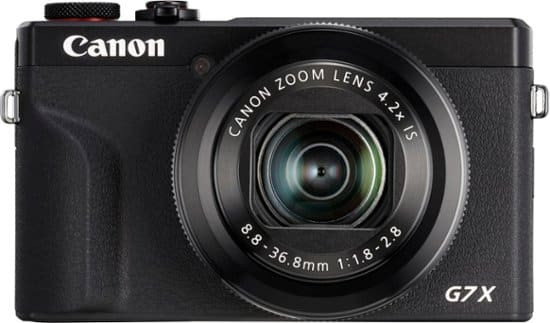 Canon G7x Mark III compact travel camera, alternative recommendation
Canon G7x Mark III compact travel camera, alternative recommendation
[Canon G7x Mark III compact camera, angled view, serving as an alternative recommendation for travelers seeking a high-quality, fixed-lens small camera option.]
Buy the Canon G7x Mark III now
This post contains affiliate links. As an Amazon Associate, we earn from qualifying purchases. Opinions are our own.
Essential Accessories for the GX85 – Explore recommended accessories for the Panasonic GX85.

